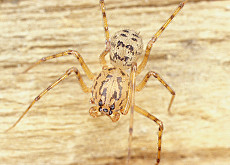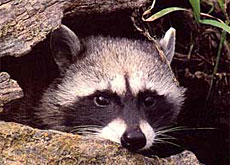Alien spiders invade Europe

Swiss researchers are warning that greater numbers of spiders are making their way to Europe - an idea likely to strike fear into the hearts of arachnophobes.
The scientists say that over the past 150 years the expansion in global trade has led to more alien spiders, bigger than domestic species, being inadvertently imported.
A huge, furry monster goosesteps across the screen. It has eight legs and you just know it’s going to eat everything in sight. It is, of course, that 1975 classic, The Giant Spider Invasion.
In the real world, it’s not quite as scary, but that doesn’t mean there isn’t an invasion going on. It is more like a slow process that has been taking place for over a century.
According to zoology professor Wolfgang Nentwig and his colleagues at Bern University, 87 foreign spider species have made their way to Europe over the past 150 years.
“Part of this invasion comes from animals reoccupying areas they left during the last Ice Age,” Nentwig told swissinfo. “This is a very slow process, though, since the animals only move maybe one kilometre per year at best.”
The faster pace of trade in recent years has also been a factor in the arrival of these unwanted immigrants, shortening the time required for a stowaway to survive.
“It’s the biggest, most-resistant spiders that survive the trip,” said Nentwig. “However, it should be pointed out that these animals are only a few millimetres long.”
Sneaky
Dock workers were among the first to encounter spiders sneaking in.
One example seen in various parts of the world was the South American “banana” spider, a rather aggressive animal with a nasty bite that hitched a ride with the fruit.
“These spiders were collected along with banana bunches they lived in, along with other animals such as reptiles and other insects,” added Nentwig. “But changes to transport and conservation mean that this no longer happens.”
Most of the new species come from Asia, as climatic conditions in the central part of the continent often mirror those in continental Europe. Trade routes are relatively short and there are many flights between the two regions.
Just three species come from South America, and four from Australia and New Zealand. But Nentwig warns that more varieties might be on their way.
“Climate warming will certainly speed the invasion process,” he said. “It will certainly provide alien species with more suitable conditions for settlement.”
Sketchy details
The results of the Bern study are conservative at best, as spiders are not a major area of research and details of new arrivals are few and far between. Nentwig reckons, however, that at least one new species will make a home for itself each year in Europe.
And humans might soon find themselves sharing space with the new arrivals. Three-quarters of these species prefer to live in urban surroundings and buildings, making the likelihood of a bite higher.
So, should we be checking under the toilet seat or in our boots in the future for deadly Australian redbacks?
“In Europe? Certainly not,” says Nentwig with a big smile.
swissinfo, Scott Capper
Arachnophobia is an abnormal fear of spiders and sometimes other arachnids, such as scorpions. It is among the most common of all phobias.
People with arachnophobia tend to feel uneasy in any area they believe could harbour spiders or that has visible signs of their presence, such as webs.
If they see a spider they may not enter the general vicinity until they have overcome the panic attack that is often associated with their phobia.
There are no spiders native to central and northern Europe that are dangerous enough to help explain why the fear of spiders is strongest there, suggesting cultural learning. But Nentwig says there is no obvious proof of this.
Many non-European cultures generally do not fear spiders, and in some cases, spiders are included in traditional foods.
Nentwig says that there are only four to five spider species around the round that really present any kind of threat to humans, although almost all spiders have venom. The only kind present in Europe is a variety of the black widow found along the Mediterranean.
Most spiders are too small to pierce human skin with their fangs, and the mortality rate from spider bites has dropped.
The giant spiders found in tropical regions are also unlikely to be encountered any time soon in Europe. According to Nentwig, they require a stable climate, with the right temperature and humidity.

In compliance with the JTI standards
More: SWI swissinfo.ch certified by the Journalism Trust Initiative



You can find an overview of ongoing debates with our journalists here. Please join us!
If you want to start a conversation about a topic raised in this article or want to report factual errors, email us at english@swissinfo.ch.